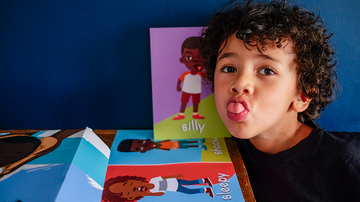Have you ever stopped to think about the characters that appear in your child’s favourite books? A new survey conducted by the Centre for Literacy in Primary Education (CLPE) recently revealed that one in five children’s books now feature characters of colour. This is a great step forward, but there is still room for improvement. Let’s explore why representation in children’s literature matters and how we can strive to do better.

Why Representation Matters
Representation matters because it sends an important message to children; they are seen and heard. It tells them that their stories are valuable and that their lives matter. Representation also helps children learn empathy and understanding by showing them the lives of others who may have different experiences than them. Seeing themselves represented positively gives children hope that they can be whoever they want to be, regardless of their race or other characteristics.

What Can We Do Better?
We need to do more than just feature characters of colour in our children's books; we need to ensure those characters are represented accurately and positively as well. That means avoiding stereotypes and difficult or damaging portrayals. It also means giving these characters meaningful roles within the story, rather than just making them background characters with no real purpose or impact on the plotline.It’s also important for us to move away from tokenism – which is when a single ‘diverse’ character is included solely for diversity points – and towards a more holistic approach where many different types of people are featured throughout a book or series of books. This allows your child to see a wide variety of different people living life without any limitations imposed on them due to their race, gender, disability status, etc., which further encourages empathy and understanding among young readers.
We must continue striving for greater representation in our children's literature so that all kids can look at these stories and feel seen and heard too! We must put an emphasis not only on including diverse characters but also representing them accurately and positively—and giving those characters meaningful roles in the plotline instead of relegating them to mere background figures with no real impact on the story itself. Doing so will help foster empathy and understanding among young readers while also sending a powerful message that all people should be free to pursue whatever dreams they may have without any barriers imposed on them due to who they are or what they look like. Only then will our stories truly reflect realities for everyone!



